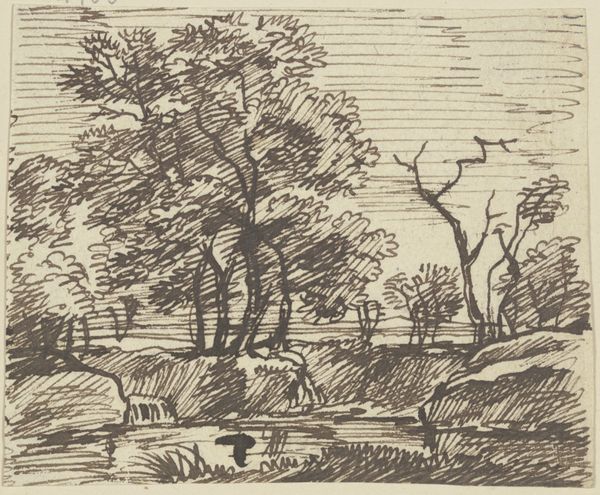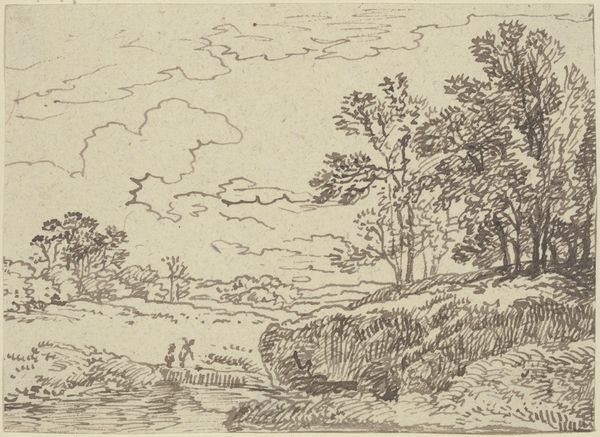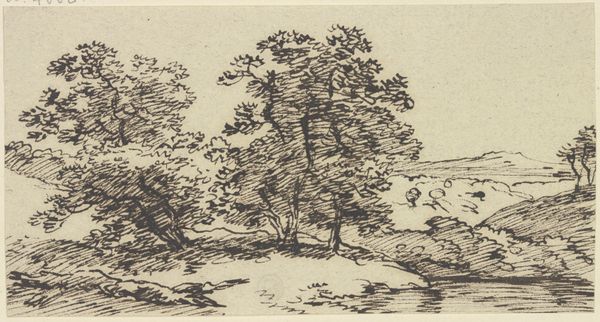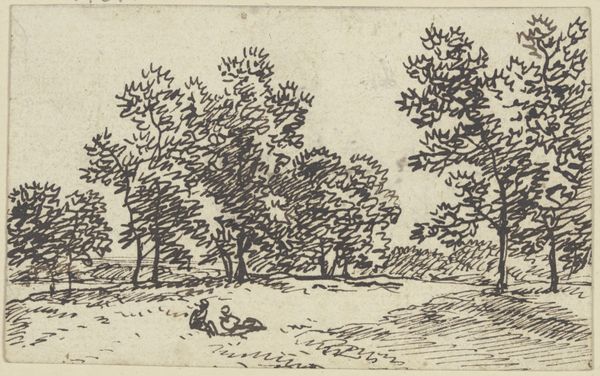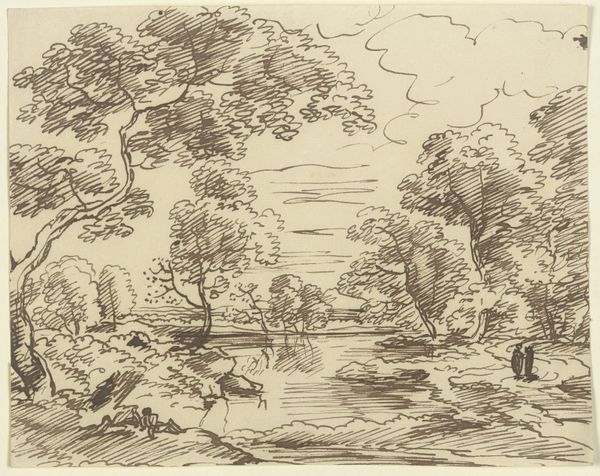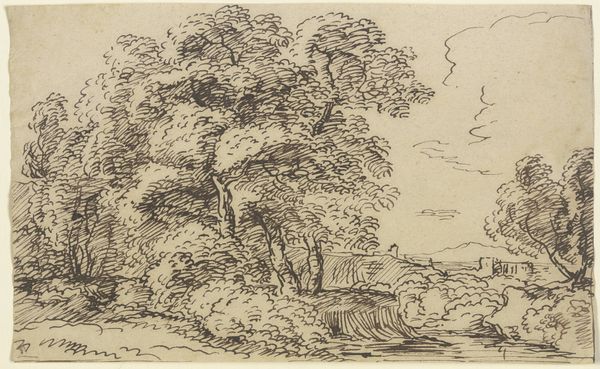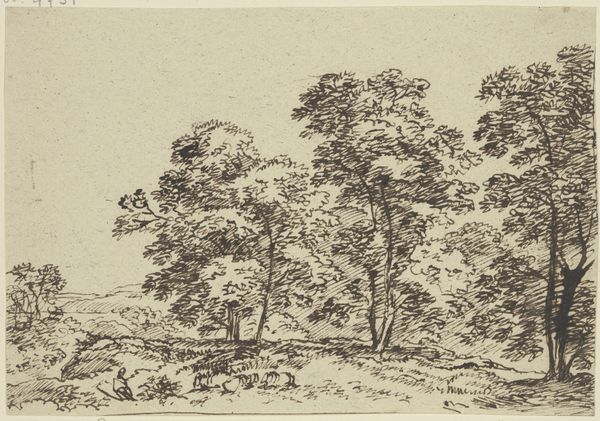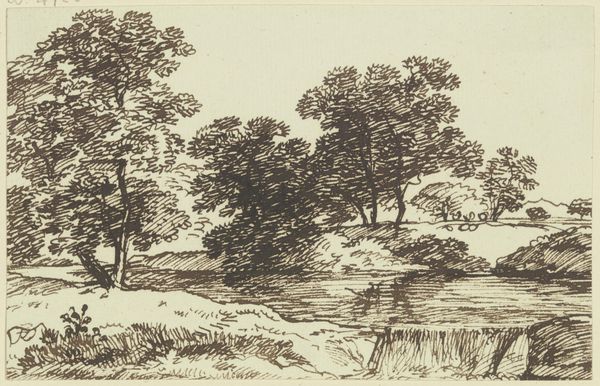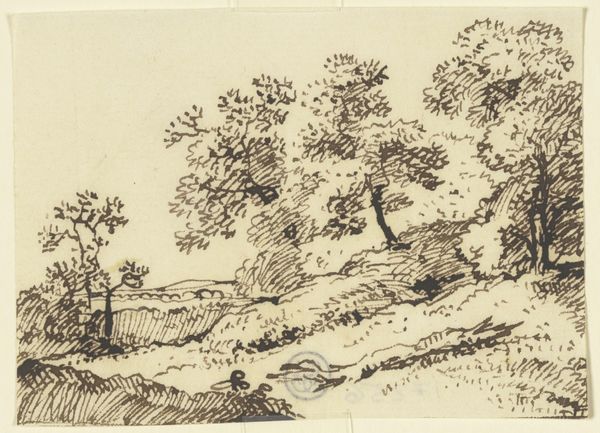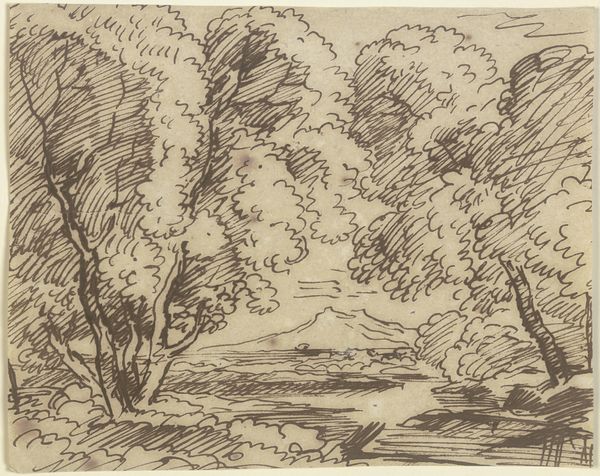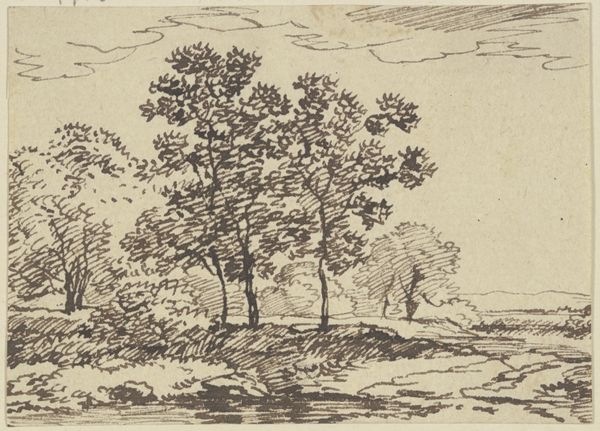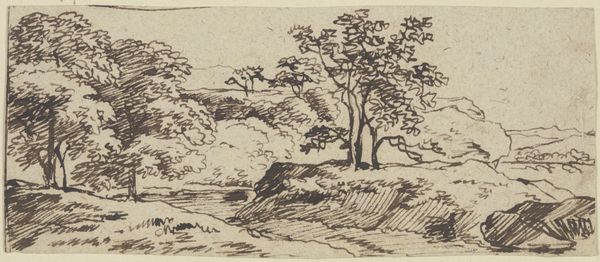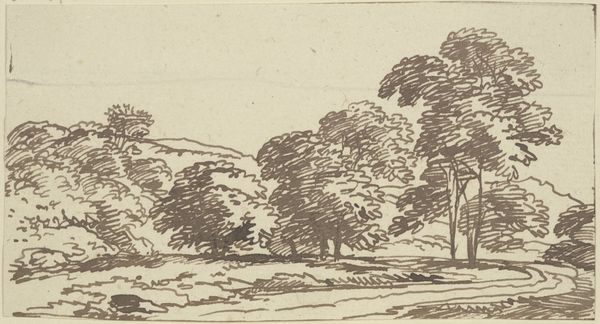
drawing, ink, indian-ink, pen
#
landscape illustration sketch
#
drawing
#
pen drawing
#
pen illustration
#
pen sketch
#
landscape
#
personal sketchbook
#
ink
#
german
#
ink drawing experimentation
#
sketch
#
indian-ink
#
pen-ink sketch
#
15_18th-century
#
pen work
#
sketchbook drawing
#
pen
#
sketchbook art
Copyright: Public Domain
Editor: This is "Trees by a body of water," a pen and ink drawing by Franz Kobell, created sometime in the 18th century. I find it so interesting how much detail he captures with such simple lines. What catches your eye? Curator: For me, the allure of this piece rests in its seemingly simple depiction of nature masking deeper societal narratives. Kobell, working within the conventions of landscape art, invites us to consider the cultural construction of nature itself. Who has access to this idyllic scene? Is it a space of leisure, labour, or both? Editor: I see what you mean. I hadn't thought about the social implications of landscape. It does seem like a privileged view, removed from the realities of most people at the time. Curator: Exactly. Consider, too, the gendered dimensions of landscape. The dominance of male artists in representing these scenes can reflect and perpetuate patriarchal control over land and resources. Are women present in the landscape, and if so, in what roles? Or is their absence symbolic of other socio-economic power dynamics? Editor: So, beyond just appreciating the aesthetic, we can use this drawing to explore questions of access, power, and representation? Curator: Precisely! Looking at it through a contemporary lens, how can art become a tool for challenging traditional representations and fostering more inclusive visions of nature and our relationship to it? Editor: This really gives me a new perspective. I’ll never look at a landscape the same way again! Thank you. Curator: My pleasure. It’s in asking these questions that we start to unlock the power of art to reshape our understanding of the world.
Comments
No comments
Be the first to comment and join the conversation on the ultimate creative platform.
